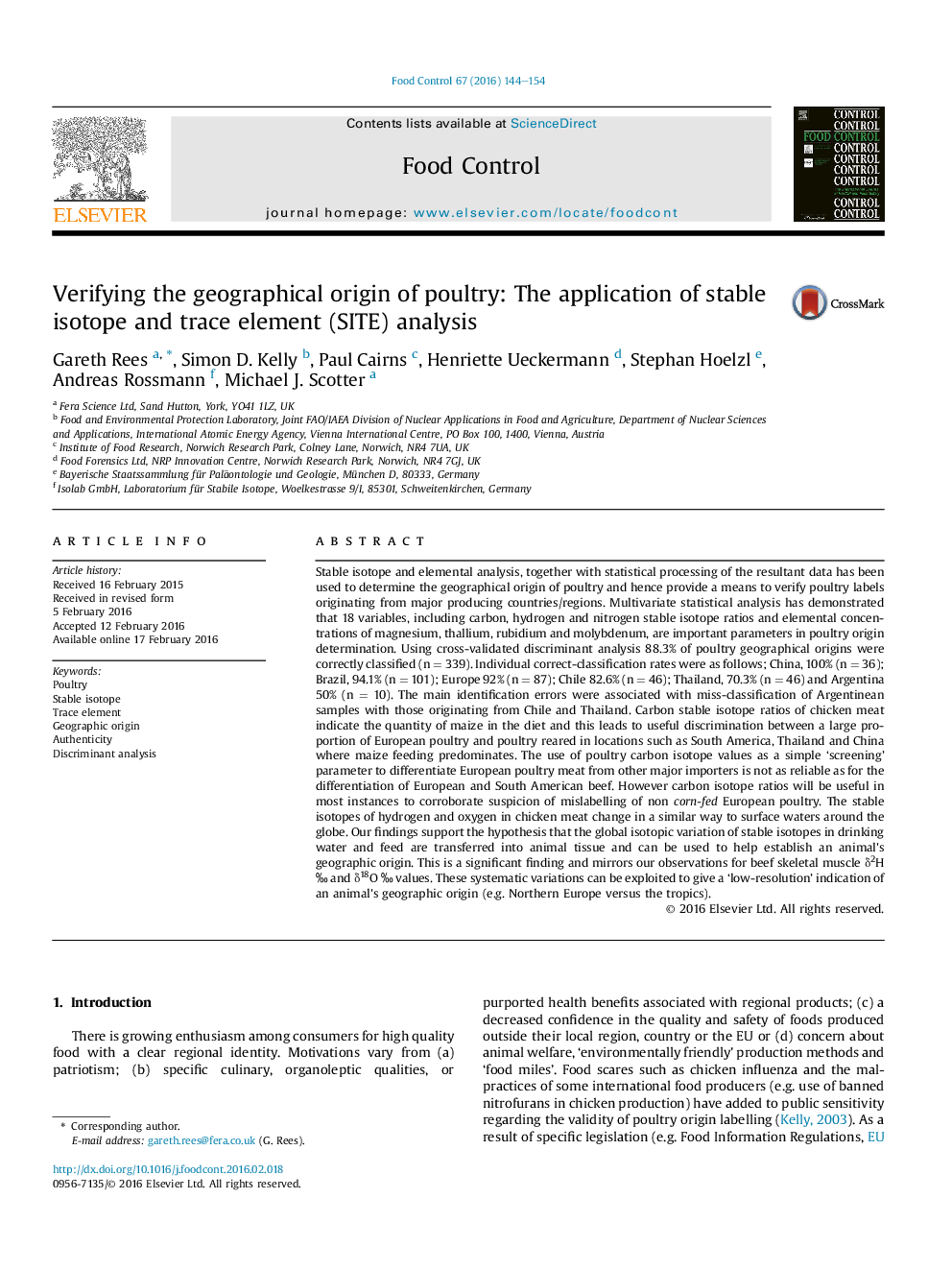| کد مقاله | کد نشریه | سال انتشار | مقاله انگلیسی | نسخه تمام متن |
|---|---|---|---|---|
| 6390113 | 1628395 | 2016 | 11 صفحه PDF | دانلود رایگان |
عنوان انگلیسی مقاله ISI
Verifying the geographical origin of poultry: The application of stable isotope and trace element (SITE) analysis
دانلود مقاله + سفارش ترجمه
دانلود مقاله ISI انگلیسی
رایگان برای ایرانیان
کلمات کلیدی
موضوعات مرتبط
علوم زیستی و بیوفناوری
علوم کشاورزی و بیولوژیک
دانش تغذیه
پیش نمایش صفحه اول مقاله

چکیده انگلیسی
Stable isotope and elemental analysis, together with statistical processing of the resultant data has been used to determine the geographical origin of poultry and hence provide a means to verify poultry labels originating from major producing countries/regions. Multivariate statistical analysis has demonstrated that 18 variables, including carbon, hydrogen and nitrogen stable isotope ratios and elemental concentrations of magnesium, thallium, rubidium and molybdenum, are important parameters in poultry origin determination. Using cross-validated discriminant analysis 88.3% of poultry geographical origins were correctly classified (n = 339). Individual correct-classification rates were as follows; China, 100% (n = 36); Brazil, 94.1% (n = 101); Europe 92% (n = 87); Chile 82.6% (n = 46); Thailand, 70.3% (n = 46) and Argentina 50% (n = 10). The main identification errors were associated with miss-classification of Argentinean samples with those originating from Chile and Thailand. Carbon stable isotope ratios of chicken meat indicate the quantity of maize in the diet and this leads to useful discrimination between a large proportion of European poultry and poultry reared in locations such as South America, Thailand and China where maize feeding predominates. The use of poultry carbon isotope values as a simple 'screening' parameter to differentiate European poultry meat from other major importers is not as reliable as for the differentiation of European and South American beef. However carbon isotope ratios will be useful in most instances to corroborate suspicion of mislabelling of non corn-fed European poultry. The stable isotopes of hydrogen and oxygen in chicken meat change in a similar way to surface waters around the globe. Our findings support the hypothesis that the global isotopic variation of stable isotopes in drinking water and feed are transferred into animal tissue and can be used to help establish an animal's geographic origin. This is a significant finding and mirrors our observations for beef skeletal muscle δ2H Ⱐand δ18O Ⱐvalues. These systematic variations can be exploited to give a 'low-resolution' indication of an animal's geographic origin (e.g. Northern Europe versus the tropics).
ناشر
Database: Elsevier - ScienceDirect (ساینس دایرکت)
Journal: Food Control - Volume 67, September 2016, Pages 144-154
Journal: Food Control - Volume 67, September 2016, Pages 144-154
نویسندگان
Gareth Rees, Simon D. Kelly, Paul Cairns, Henriette Ueckermann, Stephan Hoelzl, Andreas Rossmann, Michael J. Scotter,